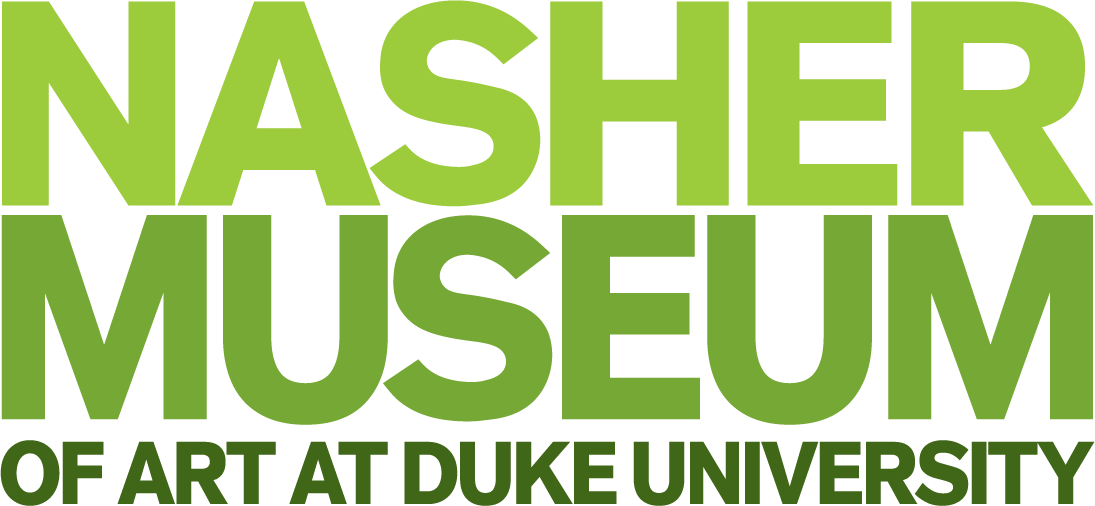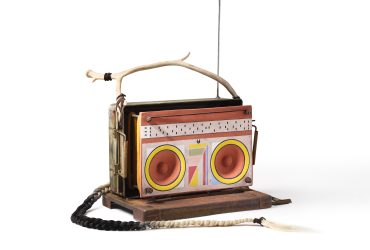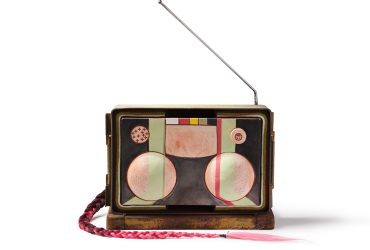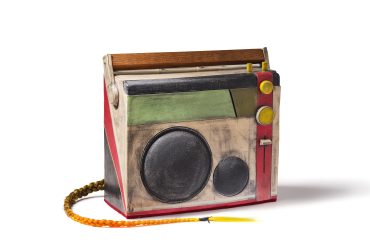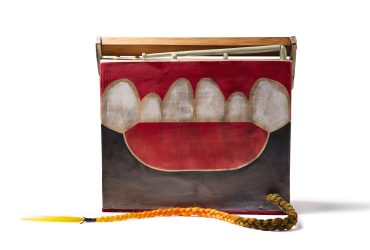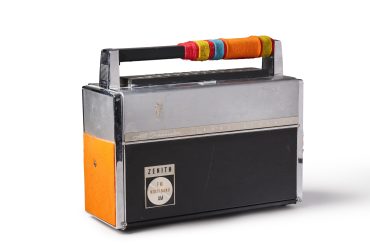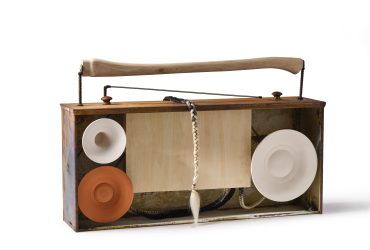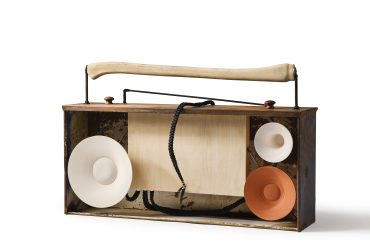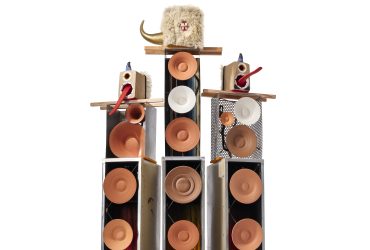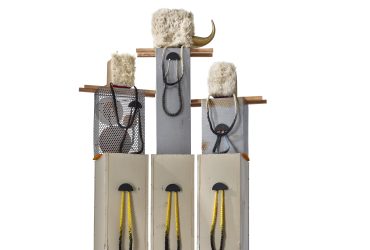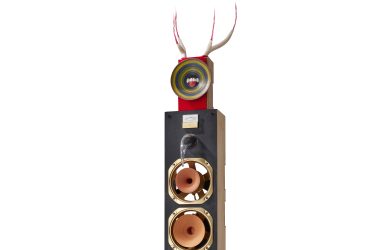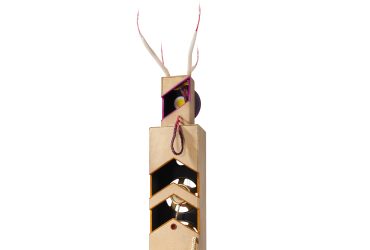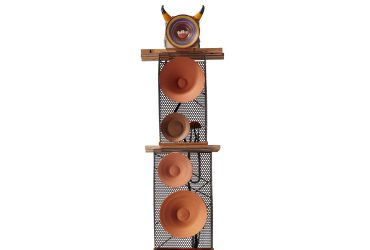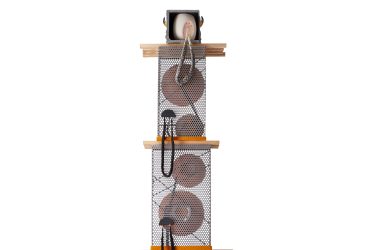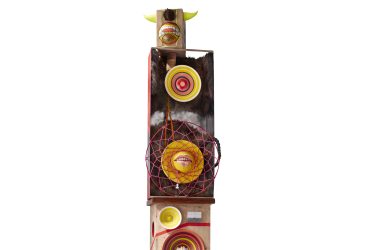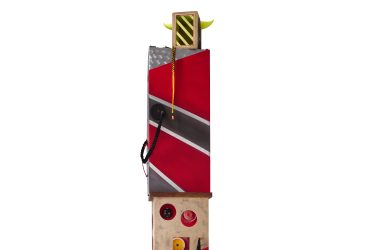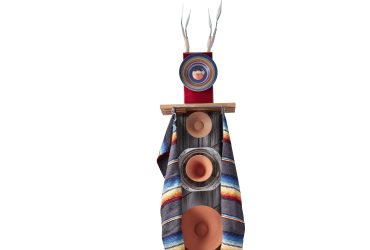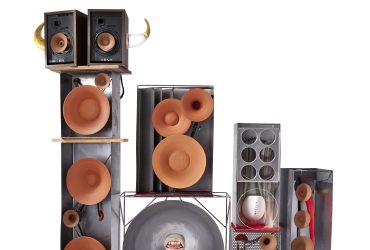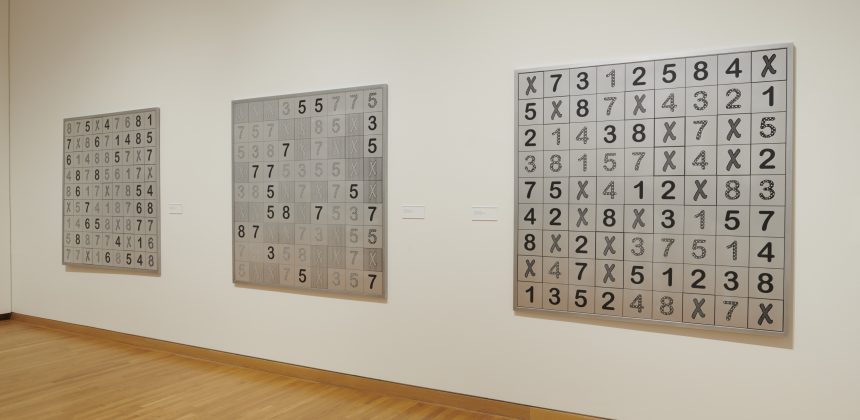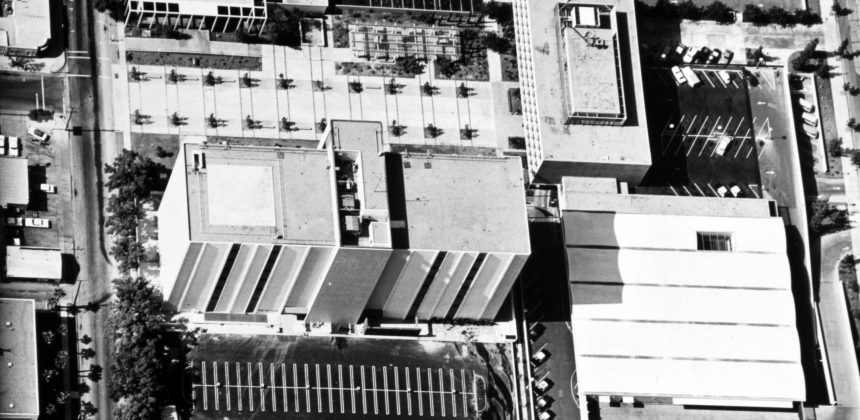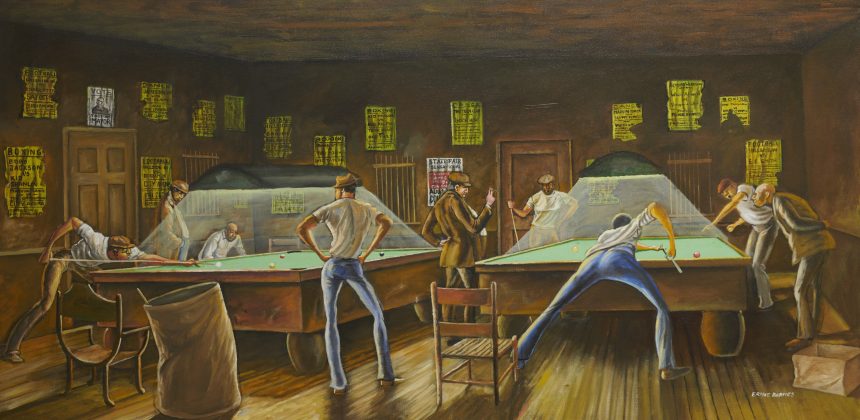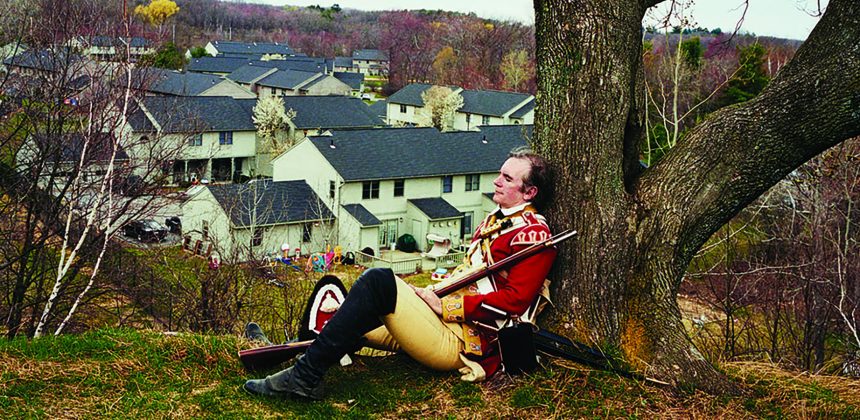Cannupa Hanska Luger: Speechless

Cannupa Hanska Luger: Speechless explores and amplifies the problematic colonial history and the concept of cargo cults from an Indigenous perspective. Cargo cults developed as a result of Western military campaigns that sent crated, often airdropped, supplies to foreign lands inhabited by Indigenous peoples. During World War II, the US had a major military presence in the South Pacific. To many who lived there these objects falling from the sky seemed like wonderous gifts from the gods. Cults formed around the provisions that arrived from above, when in fact they were from the very forces that were colonizing Indigenous lands.
The exhibition features several monumental works by the artist, including The Keep, a large-scale radio tower made of pine trees, hand-made paper feathers, and found objects as well as two of the artist’s Transportable Intergenerational Protection Infrastructure (TIPI) works. Speaker towers, made from ceramic components, punctuate the installation and with the radio tower, represent tools of colonial power. Also included are eleven large Native American bustles, a traditional part of Native American powwow regalia, nine of which were created as part of Luger’s recent residency at Dieu Donné in New York, along with an immersive video, Future Ancestral Technologies: ++ a generation of new myth ++.
Speechless asks important questions relating to human agency, language, and means of control. Who gets to speak? Who must bite their tongue? Whose messages are muted? What meanings remain to be discovered? In Luger’s words, “communication is at the root of all ritual and technological development.” He asserts that the concept of the exhibition, acceptance of material (in any form), “flips the Western gaze back on itself to reflect that in present day North American culture, we are all in a cargo cult.”
The work presented here is part of Luger’s ongoing project, Future Ancestral Technologies (FAT) that explores Indigenous futures presented through a lens of speculative fiction. In the project, he probes how to share technology with his ancestors as the environment becomes an increasingly important, even desperate concern. Luger describes FAT as “a methodology, a practice, and a way of future dreaming that harnesses the power of science fiction to shape collective thinking and reimagine the future on a global scale.” The natural world is a critical element of this work as realized through the direct relationship he and his ancestors have with the land, the nomadic technologies Indigenous people develop, and the sacred places to which they form connections. Cumulatively, Luger’s work encourages us to think about the earth, not as a possession that humans dominate, but rather as something omnipresent with which humans must restore their bonds. “Sustaining ourselves means belonging to the environment,” he has said.
Cannupa Hanska Luger (b. 1979) is an enrolled member of the Three Affiliated Tribes of Fort Berthold and is Mandan, Hidatsa, Arikara and Lakota. Working with a wide array of media—video, performance, ceramic, textiles, found materials, and most recently paper—the artist activates cultural and social awareness relating to contemporary experience through his combinatory large-scale installations. He creates vivid aesthetic environments where Indigenous voices are amplified and rediscovered through the formulation of his inventive artistic vocabulary that counters a colonialist or anthropological gaze.
Cannupa Hanska Luger: Speechless is organized by the Nevada Museum of Art in Reno.
All images are courtesy of the artist and Garth Greenan Gallery, New York.
Photos by Wendy McEahern.
Organization & Support
Cannupa Hanska Luger: Speechless is organized by the Nevada Museum of Art in Reno.
Sponsors: Anonymous; Roswitha Kima Smale, PhD
Supporting Sponsors: Maureen Mullarkey and Steve Miller
Additional Support: Garth Greenan Gallery, New York
At the Nasher Museum, this exhibition is made possible by The Nancy A. Nasher and David J. Haemisegger Family Fund for Exhibitions; the A. Courtney Shives Endowment Fund; the Sunny Rosenberg Endowment Fund; the J. Horst and Ruth Mary Meyer Fund; the Prakash and Anjali Melwani Fund; and the Wallace Fowlie Endowment Fund.
